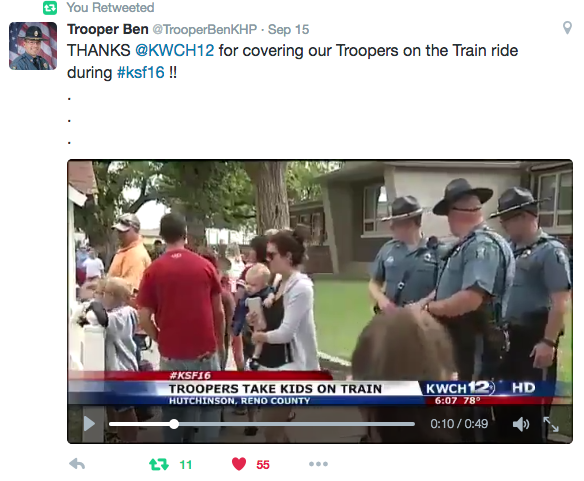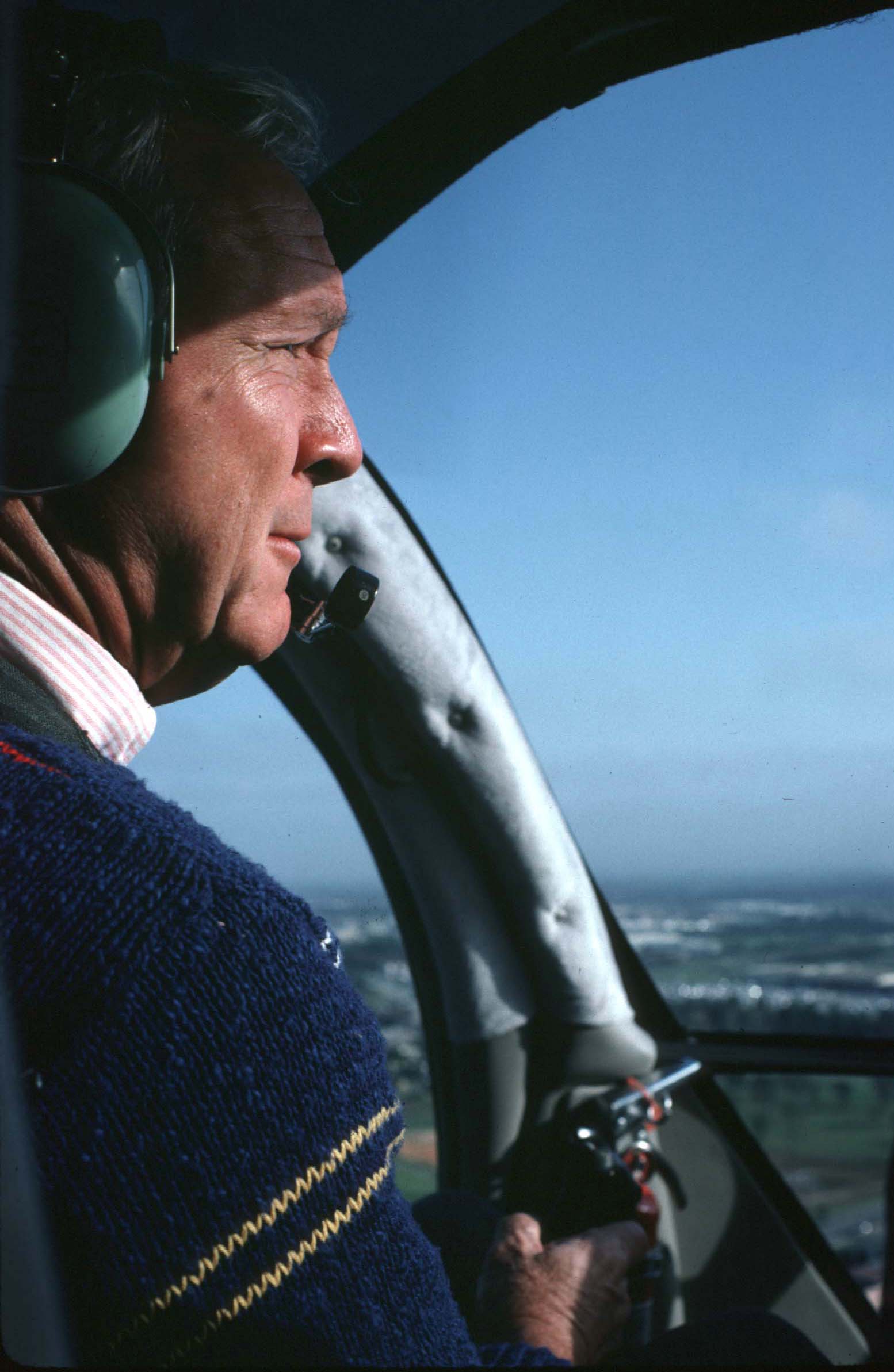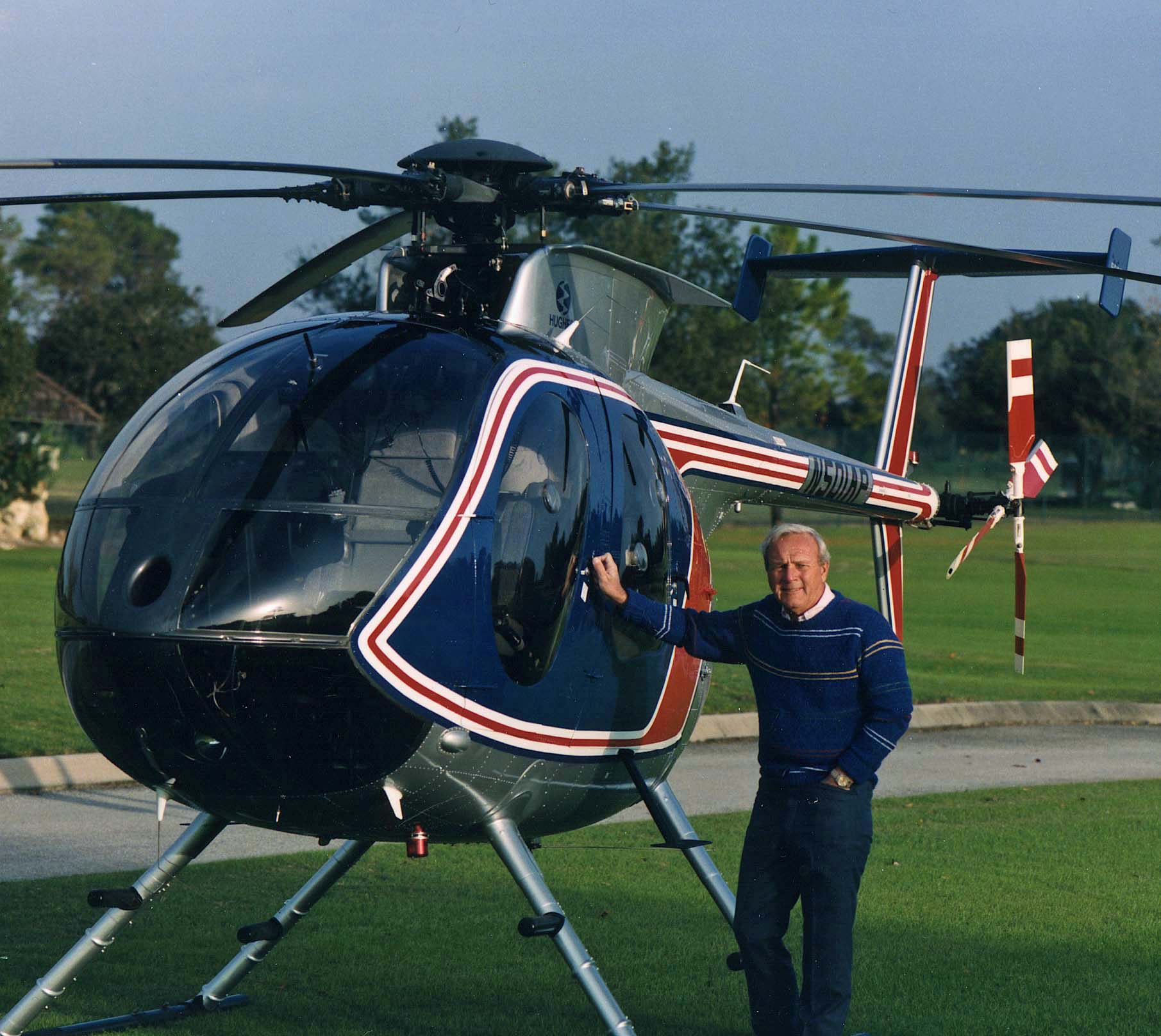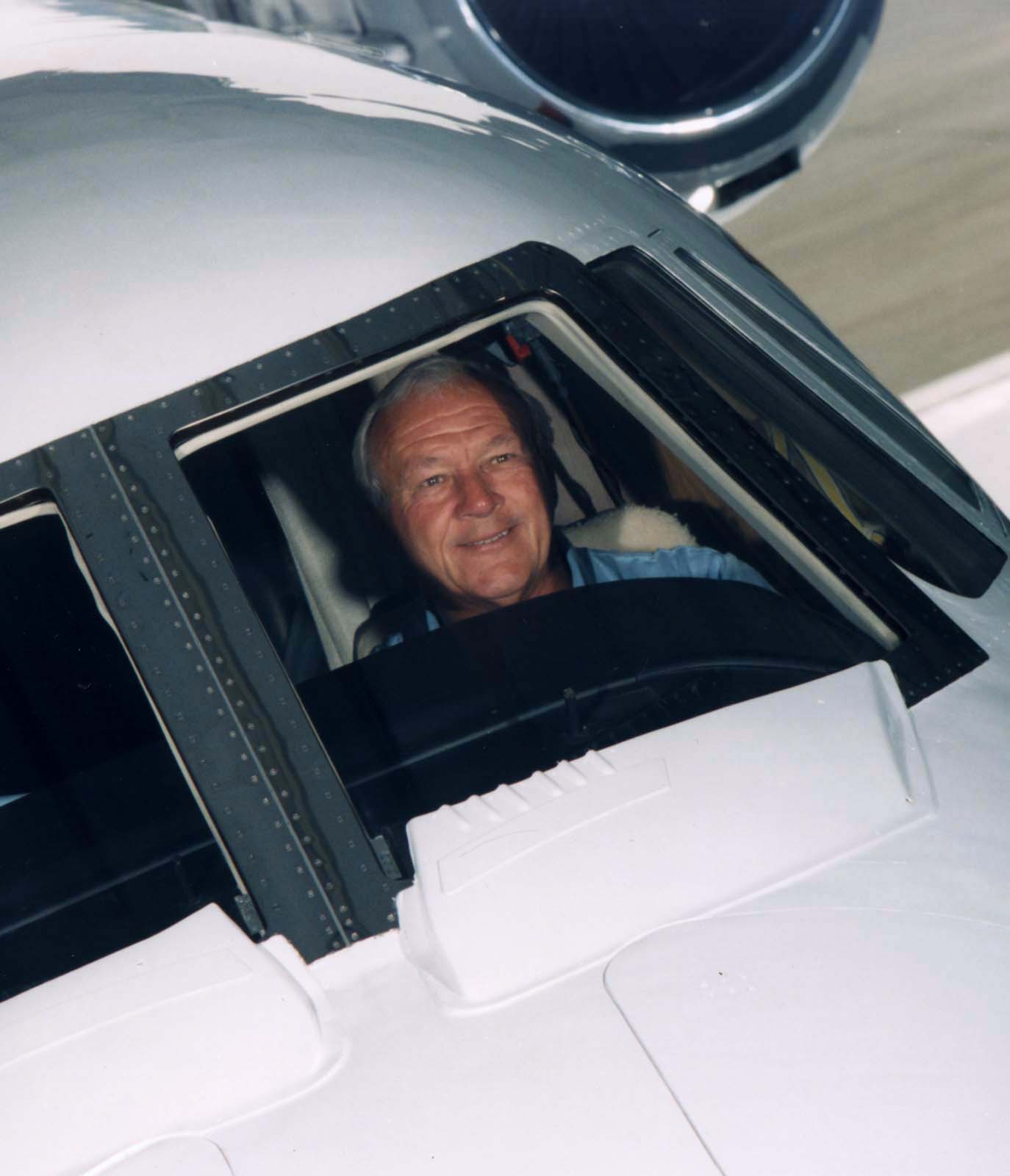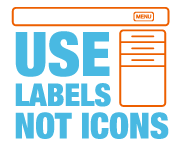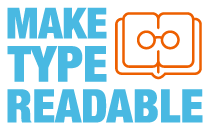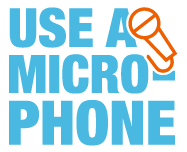The world mourns a great man this week with the passing of The King. Lovers of golf rightly revere Arnold Palmer for what he did for the game. Making it not just a pastime for the elite but a sport where talent reigned. When he played, millions watched. It didn’t matter that he was the son of a greenskeeper. Only that his brawny, full-out power blasted balls far down the fairway. That guts smacked them out of the rough. And that Palmer won. Again and again and again. Sixty-two PGA Tour tournaments plus another 33 titles over a 52-year career.
This superstar’s superstar made his mark in business aviation, too. In fact, he often said if he hadn’t been a golfer, he’d have been a pilot. He loved the left seat. In 55 years he amassed more than 18,000 hours in it. Private aviation transformed his life. He called its winged magic “something out of science fiction.” Letting him travel not just to tournaments, but to building his kingdom. He and partner Ed Seay designed more than 200 courses around the world.
But rather than my telling you about this much-loved icon, I thought you might like to read the foreward he penned in 1998 for my father Paul Bowen’s first book, Air to Air. Palmer cared for this industry and fought to advance it. He gave voice to NBAA’s “No Plane, No Gain” advocacy campaign, giving personal testimony to private aviation’s vital role. NBAA is dedicating its upcoming 2016 Business Aviation Convention & Exhibition (BACE) in Orlando, Florida, to Palmer. A gracious nod to a guiding star.
Foreword
by Arnold Palmer
I take great pleasure in contributing the foreword to Air to Air, the definitive collection of Paul Bowen’s stunning aircraft photographs. I’ve been flying for more than four decades, and Paul has taken aviation-related pictures of me since the early 1980s. Many of us who love airplanes have come to know him as a professional and admire his work for its artistic quality and precision. I personally know him as a gentleman and a friend.
Obviously, flying is a big part of Paul’s life.
Likewise, it’s a big part of mine, and it has been since 1958 when I started taking flying lessons. By then I’d begun winning on the tour, and my daughters had been born. While making a living was important, I was looking for a way to reduce the time I was spending away from my family, and that meant avoiding airlines and road trips.
Private aviation was really the only answer, and it proved a good one. Private airplanes are fast, they avoid traffic and terrain, they can land closer to most destinations than airliners can, and they reduce or eliminate the need for overnight stays.
Also, being a pilot is just plain fun. Fun –– now that’s a cure for both stress and fatigue.
Back when I was a regular airline passenger, traveling wore me out. Now that I’m my own pilot, flying energizes me. I invariably get out of the cockpit feeling refreshed.
As I read Air to Air the first time, the fun Paul had in creating it came through clearly. The people with whom he works are fun, his unique job in aviation is fun, and the story he tells in this book is full of fun. I certainly understand why, and so will all of you who fly or who’ve ever considered learning.
The more I’ve flown, the more I’ve enjoyed it, the more necessary it is to me, and the more sophisticated my needs have become.
I bought my first aircraft, an Aero Commander 500, in 1961. A couple of years later, I had become so busy that I moved up to a 560F Commander and hired a part-time pilot to fly with me. Over the years, flying became so essential to me and my business interests that I continued to buy faster aircraft with increased range and more versatile capabilities. I even flew an MD500 helicopter for a while. Thanks to my airplanes and to having the excellent and modern Westmoreland County Airport close to my home in Latrobe, Pennsylvania, I’ve accomplished more than twice as much in my golf and business careers as I’d have been able to do with lesser means of transportation.
I’m not alone in this assertion. Business jets have become essential tools throughout the global village, and today’s airplanes are better and safer than ever. My own first jet was a Jet Commander in 1966. It opened up a whole new range of speed and versatility. Since then I’ve owned and flown a Learjet and five Citations including my current Citation X, the fastest corporate aircraft ever built.
Since I began flying them, jets have multiplied my productivity beyond my wildest dreams. They have turned trips that would take three days on the airlines into matters of a few hours. They have shrunk the world to a manageable size and have enabled me to get to several sites, all hundreds of miles apart, in a single day. They have let me go where I needed to be, fulfill my commitments, and then fly back to have dinner with my wife that same night.
I look back at 1955 when I started out on the pro tour, back when Winnie and I had to drive from tournament to tournament. In those days we lived in a trailer and towed it behind a car barely powerful enough to pull it. On some of the longer trips, particularly the ones in which we had to cross the country, when I got into a tournament town I literally got out of the car and stepped onto the first tee. This is a big country, 3,000 miles across, and exhaustion didn’t do my golf any good.
But now, more than 40 years later, I can cross the country in four hours and arrive refreshed.
Back in the 50s, I certainly didn’t foresee this capability. It’s made Winnie’s and my lives much more livable. It’s like something out of science fiction.
And you’ll think you’re looking at machines out of science fiction when you see the aircraft Paul has put into this book. But everything in here is real, and Paul has captured each airplane’s beauty the way only he can.
Paul’s wife, Gail, has done us all a favor by supporting her husband’s efforts and making it possible for him to go get these images. And Paul himself has done us a favor by assembling this collection of his favorites. He’s letting us share the sights he sees nearly every day through his lens.
Paul shows us today’s most beautiful, high-tech sculptures, sleek works of art designed to slice through the sky and serve all mankind. His views of these wonderful machines showcase their beauty and bring to mind the freedom they bestow upon their masters, the operators who guide them from point to point on our globe, a planet which they and their sky steeds continue to make smaller and more accessible.
Go ahead. Envy them.
And envy Paul.
He has a great job.
Best regards,

This column ran in the September 28th issue of BlueSky Business Aviation News.

